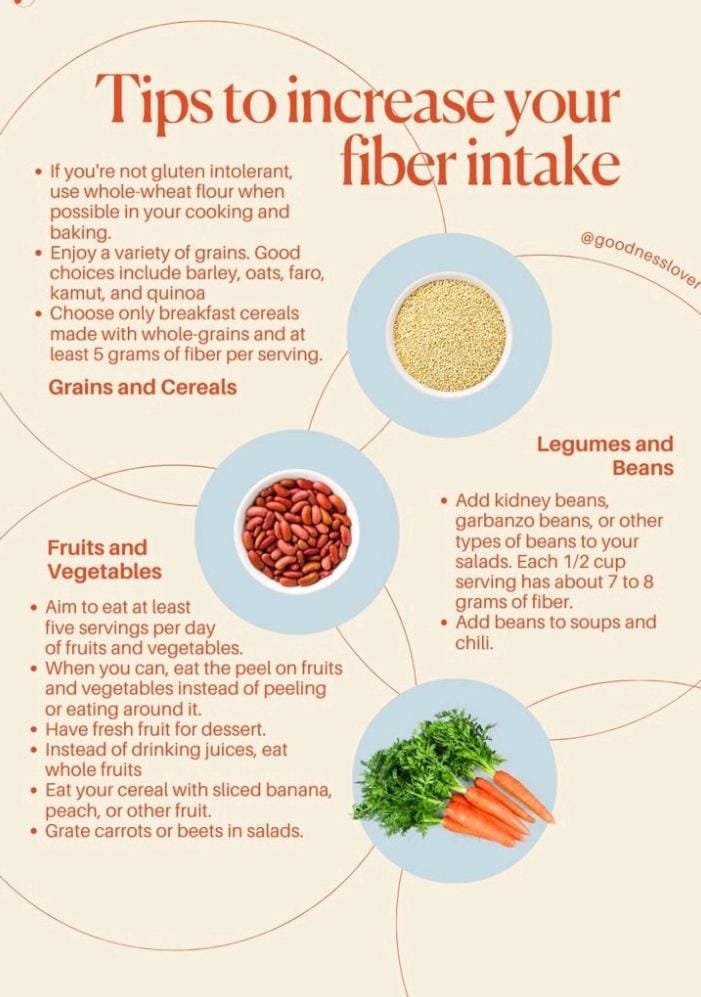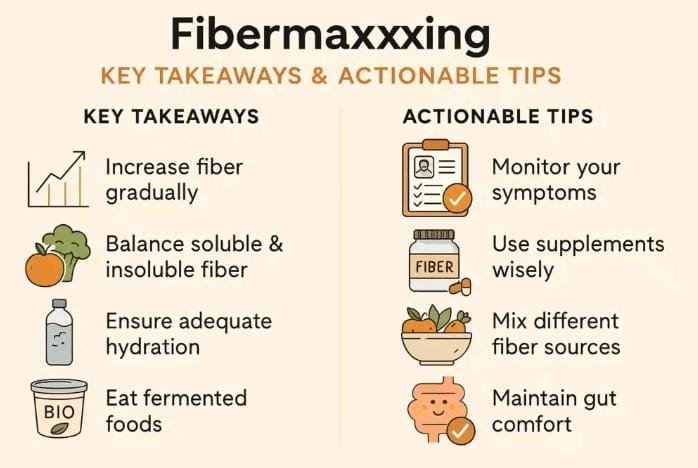Fibermaxxing has become a trending term in the health and wellness community, especially among individuals looking to optimize gut health, digestion, and overall well-being. This practice involves dramatically increasing dietary fiber intake through whole foods, supplements, or both. While fiber is essential for digestive health, going overboard can have unwanted consequences. In this article, we’ll discuss the potential side effects of ,Fibermaxxing necessary precautions, and tips for a balanced approach.
What is Fibermaxxing?
Fibermaxxing refers to the intentional practice of consuming large amounts of dietary fiber—far beyond the recommended daily intake. The goal is usually to improve bowel regularity, reduce cholesterol, manage blood sugar, or even assist with weight loss.
The average recommended daily fiber intake for adults is:
- Men: 30–38 grams per day
- Women: 21–25 grams per day
However, fibermaxxing enthusiasts often exceed these amounts significantly, sometimes consuming 50 grams or more daily. While fiber is beneficial, too much of it can lead to problems if not done correctly.
Why Do People Try Fibermaxxing?

There are several reasons why this trend is gaining popularity:
- Improved Digestion: Fiber adds bulk to stool and helps prevent constipation.
- Blood Sugar Control: High-fiber diets can help regulate glucose levels.
- Cholesterol Reduction: Fiber can reduce LDL (“bad”) cholesterol.
- Satiety and Weight Loss: Fiber-rich foods keep you fuller for longer.
While these benefits sound great, consuming excessive fiber without proper balance can backfire.
Common Side Effects of Fibermaxxing

Before you start loading up on fiber supplements and high-fiber foods, you should understand the possible downsides.
1. Bloating and Gas
A sudden spike in fiber intake can lead to gas, bloating, and abdominal discomfort. This happens because fiber is fermented by gut bacteria, producing gases like methane and hydrogen.
2. Constipation or Diarrhea
Ironically, while fiber can prevent constipation, too much without adequate water can cause blockages or hard stools. Conversely, some people may experience diarrhea due to excessive soluble fiber intake.
3. Nutrient Absorption Issues
Excess fiber can bind with minerals such as calcium, iron, magnesium, and zinc, reducing their absorption. Over time, this may lead to nutrient deficiencies if your diet isn’t well-balanced.
4. Abdominal Pain and Cramping
Large quantities of fiber can irritate the digestive system, especially for people with IBS (Irritable Bowel Syndrome) or other gastrointestinal sensitivities.
5. Increased Risk of Blockages
In rare cases, consuming high amounts of fiber without enough water can lead to intestinal blockages, which can be serious and require medical attention.
Who Should Be Careful with Fibermaxxing?
Not everyone is an ideal candidate for aggressive fiber intake. People who should approach fibermaxxing cautiously include:
- Individuals with IBS or Crohn’s Disease: High fiber may worsen symptoms.
- People with a history of gut blockages or strictures: Extra fiber can cause complications.
- Patients on medications: Fiber may interfere with drug absorption (e.g., thyroid medications or blood thinners).
Always consult a healthcare provider before making dramatic changes to your fiber intake.
Precautions to Take Before Fibermaxxing
If you still want to try fibermaxxing for its potential benefits, follow these safety tips:
1. Increase Fiber Gradually
Don’t jump from 15 grams to 50 grams overnight. Increase your intake slowly over several weeks to allow your gut to adapt.
2. Drink Plenty of Water
Fiber absorbs water, so dehydration can make things worse. Aim for at least 8–10 glasses of water daily.
3. Balance Soluble and Insoluble Fiber
Both types of fiber serve different purposes:
- Soluble fiber: Slows digestion and stabilizes blood sugar (found in oats, beans, fruits).
- Insoluble fiber: Adds bulk and helps bowel movement (found in whole grains, vegetables).
A mix of both ensures better digestive health.
4. Monitor Your Body’s Response
Pay attention to symptoms like bloating, cramps, or irregular bowel movements. If issues persist, reduce your fiber intake slightly and consult a nutritionist.
5. Avoid Overreliance on Supplements
While fiber supplements (psyllium husk, inulin, etc.) can help, getting fiber from whole foods is healthier since they provide additional nutrients.
Healthy Alternatives to Extreme

Instead of going to extremes, consider these balanced approaches:
- Eat a variety of fiber-rich foods: Vegetables, fruits, whole grains, nuts, and seeds.
- Include probiotics: Foods like yogurt or kefir can support gut health.
- Practice portion control: Stick to 25–35 grams of fiber per day unless advised otherwise by a doctor.
When to Seek Medical Help
If you experience severe constipation, persistent diarrhea, sharp abdominal pain, or vomiting after increasing fiber, seek medical attention immediately. These could indicate a blockage or another serious issue.
Final Thoughts
Fiber is undoubtedly essential for optimal health, but like most things in life, balance is key. Fibermaxxing might sound like a quick fix for digestion and weight management, but excessive fiber intake can lead to discomfort, nutrient deficiencies, and even severe digestive issues if precautions are not taken.
Before making significant dietary changes, consult a healthcare professional or registered dietitian. Your gut health is important—treat it with care!

✨ Very insightful read! I always thought increasing fiber was only beneficial, but I didn’t realize fibermaxxing could actually cause side effects if not done carefully. The tips about balancing soluble and insoluble fiber and drinking enough water are super helpful. Thanks for highlighting the precautions—this makes me more mindful about how I approach my diet. 🌿